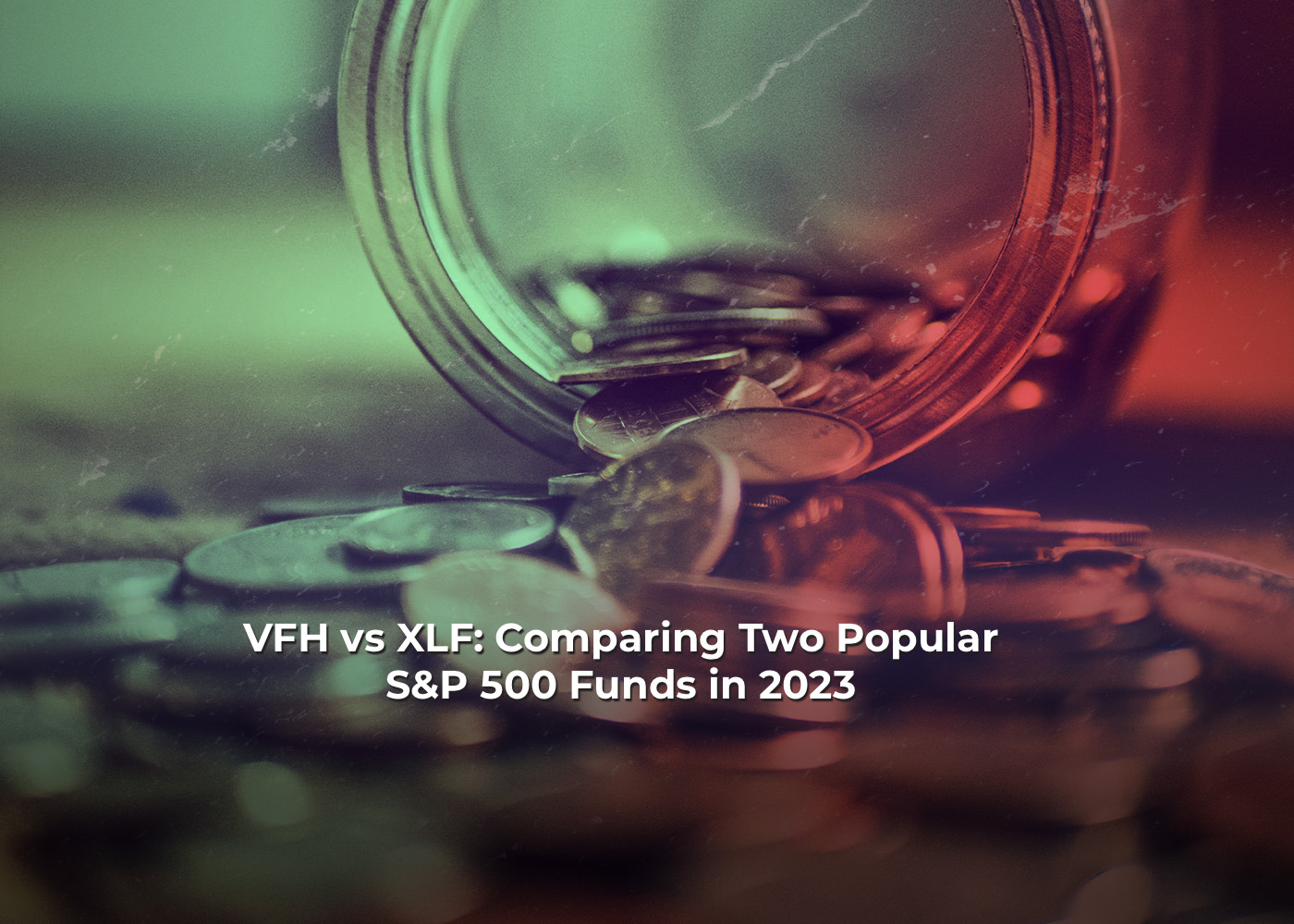VFH vs XLF: Comparing Two Popular S&P 500 Funds in 2023
Investing is a very difficult and detailed subject in almost every period. Investing in the financial sector and diversifying portfolios is a smart move for investors looking to potentially benefit from the growth of this important sector of the economy.

Investing is a very difficult and detailed subject in almost every period. Investing in the financial sector and diversifying portfolios is a smart move for investors looking to potentially benefit from the growth of this important sector of the economy.
Two popular financial sector funds are the Vanguard Financials ETF (VFH) and the Financial Select Sector SPDR Fund (XLF). Both funds offer exposure to the financial sector
It should be noted that there are important differences between them that investors should take into account when making investment decisions. We will try to take a closer look at VFH and XLF, their pros and cons, key differences and how to choose between them.
Why Is It Important To Invest In The Financial Sector?
First of all, let’s highlight why it is important to invest in the financial sector. First of all, the financial sector is an area that plays a very important role in the economy by providing services such as banking, insurance and investment management.
When we take a look at its general characteristics, the financial sector is among the most important sectors to invest in. It also provides investors with the opportunity to examine a wide range of businesses and potentially benefit from the growth of the sector.
The VFH vs XLF comparison is often made in this regard. In general, individuals and institutions looking to invest in the financial sector of the economy prefer to take a close look at both of these companies.
VFH is an ETF that aims to track the performance of the MSCI US Investable Market Financial Index, which includes US companies in the financial sector.
XLF is an ETF that tracks the S&P 500’s Financial Select Sector Index, which includes companies in the financial sector. But do these firms have pros and cons against each other? Let’s examine them separately.

What is VFH?
VFH is an ETF that aims to enable investors to invest in US companies in the financial sector. There are many advantages to investing in VFH. Some of them are as follows: A low expense ratio of 0.10%, which is lower than the average expense ratio of similar funds, and broad diversification across the financial sector.
It should also be noted that VFH has a strong focus on large-capitalization stocks that can potentially provide investors with stable returns.
What Are The Disadvantages of VHF?
However, there are also some disadvantages to investing in VFH. For example, since it focuses on US companies in the financial sector, it may not focus on international companies or other sectors that may perform well. Also, VFH’s performance can be affected by changes in interest rates or economic conditions affecting the financial sector.
What is XLF?
XLF is an ETF that allows investors to invest in US companies in the financial sector of the S&P 500. Some of the advantages of investing in XLF include a low expense ratio of 0.12%, which is lower than the average expense ratio of similar funds, and broad diversification across the financial sector of the S&P 500. XLF also has a strong focus on large-capitalization stocks that can potentially provide investors with stable returns.
What Are The Disadvantages of XLF?
There are also some disadvantages to investing in XLF. For example, because it focuses on the financial sector of the S&P 500, it may not have exposure to smaller companies or companies in other sectors that may perform well. Also, XLF’s performance can be affected by changes in interest rates or economic conditions affecting the financial sector.
What Are The Main Differences Between VFH vs XLF?
There are a few key differences to consider when comparing VFH and XLF. One of the biggest differences is the stocks they hold. XLF focuses solely on the financial sector of the S&P 500, while VFH has a broader range of financial sector stocks, including banks, insurance companies, and real estate investment trusts (REITs). Also, VFH has more exposure to mid- and small-capitalization companies, while XLF may have more exposure to large-capitalization companies.
Another key difference between VFH and XLF is their performance. Over the last five years (as of September 2021), VFH has slightly outperformed XLF with an annualized return of 14.39% compared to XLF’s 14.33% annualized return. However, this performance may vary depending on market conditions and other factors.
VFH and XLF also have slightly different expense ratios, with VFH having a slightly lower expense ratio than XLF.
If You Have to Choose Between VFH and XLF
When deciding between VFH and XLF, investors should consider several factors. First, investors should assess their investment objectives and risk tolerance to determine which fund better suits their needs.
For example, investors seeking broad diversification across the financial sector may prefer VFH, while those seeking exposure to the financial sector of the S&P 500 may prefer XLF.
Investors should also consider the fees and expenses associated with each fund. While both VFH and XLF have low expense ratios, investors should also consider other costs such as trading fees, taxes and other expenses associated with owning the fund.
Investors should consider their overall portfolio diversification when choosing between VFH and XLF. While both funds can provide exposure to the financial sector, investors may want to consider adding other asset types such as bonds, international equities or real estate to their portfolios to further diversify and potentially reduce risk.
Comparison of Objectives and Characteristics
Choosing between VFH and XLF can depend on several factors, including an investor’s investment objectives, risk tolerance and overall portfolio diversification. While both funds offer exposure to the financial sector, their different investment objectives, holdings and performance may influence an investor’s decision. By understanding the pros and cons of each fund and assessing their individual needs, investors can make informed decisions when choosing between VFH and XLF and potentially enhance their investment portfolios with financial sector funds.




